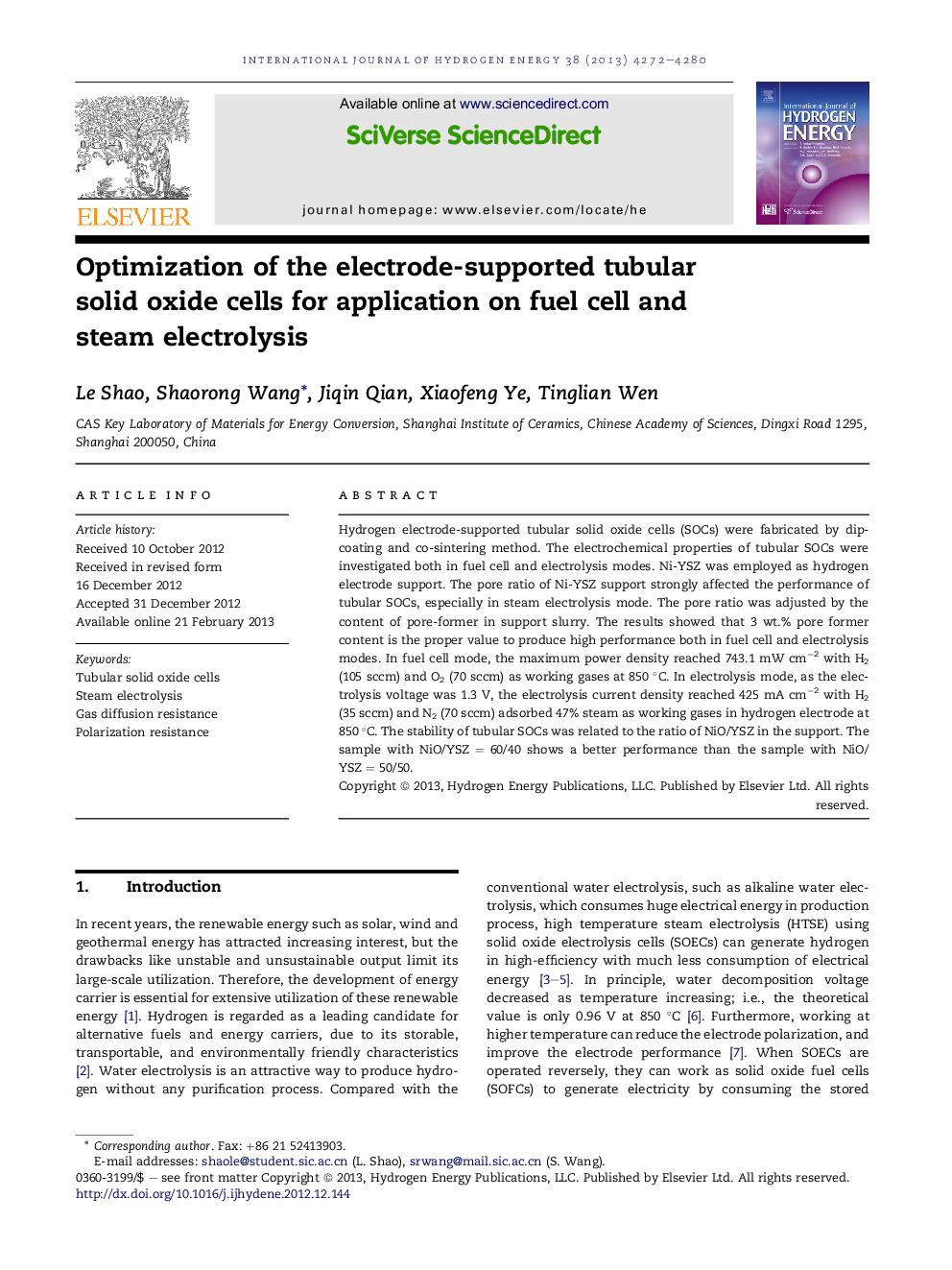| کد مقاله | کد نشریه | سال انتشار | مقاله انگلیسی | نسخه تمام متن |
|---|---|---|---|---|
| 1278119 | 1497534 | 2013 | 9 صفحه PDF | دانلود رایگان |

Hydrogen electrode-supported tubular solid oxide cells (SOCs) were fabricated by dip-coating and co-sintering method. The electrochemical properties of tubular SOCs were investigated both in fuel cell and electrolysis modes. Ni-YSZ was employed as hydrogen electrode support. The pore ratio of Ni-YSZ support strongly affected the performance of tubular SOCs, especially in steam electrolysis mode. The pore ratio was adjusted by the content of pore-former in support slurry. The results showed that 3 wt.% pore former content is the proper value to produce high performance both in fuel cell and electrolysis modes. In fuel cell mode, the maximum power density reached 743.1 mW cm−2 with H2 (105 sccm) and O2 (70 sccm) as working gases at 850 °C. In electrolysis mode, as the electrolysis voltage was 1.3 V, the electrolysis current density reached 425 mA cm−2 with H2 (35 sccm) and N2 (70 sccm) adsorbed 47% steam as working gases in hydrogen electrode at 850 °C. The stability of tubular SOCs was related to the ratio of NiO/YSZ in the support. The sample with NiO/YSZ = 60/40 shows a better performance than the sample with NiO/YSZ = 50/50.
► Tubular SOCs are fabricated by dip-coating and co-sintering method.
► Starch pore former addition into NiO-YSZ support changes the pore ratio of support.
► The cell with 3% pore-former exhibits the best performance.
► The stability of tubular SOCs is related to the NiO/YSZ ratio in support.
► The NiO/YSZ = 60/40 sample shows better stability than the 50/50 sample.
Journal: International Journal of Hydrogen Energy - Volume 38, Issue 11, 15 April 2013, Pages 4272–4280